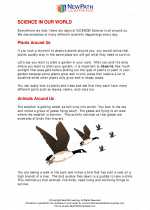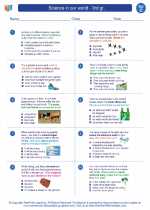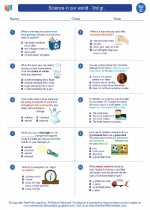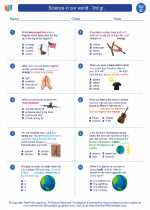Feedback Mechanisms
Feedback mechanisms are processes in living organisms that help maintain homeostasis, or the internal balance of the body. These mechanisms involve the detection of changes in the internal or external environment, and the response to these changes in order to maintain a stable internal environment.
Types of Feedback Mechanisms
There are two main types of feedback mechanisms: negative feedback and positive feedback.
- Negative Feedback: This is the most common type of feedback mechanism. In negative feedback, the body senses a change and activates mechanisms to reverse that change, bringing the body back to its original state. For example, when body temperature rises, negative feedback mechanisms cause sweating and vasodilation to cool the body down.
- Positive Feedback: In positive feedback, the body senses a change and activates mechanisms that amplify or reinforce that change. This type of feedback is less common and is often associated with processes that need to be rapidly completed, such as blood clotting or childbirth.
Examples of Feedback Mechanisms
There are several examples of feedback mechanisms in the human body:
- Thermoregulation: When the body temperature rises, negative feedback mechanisms cause sweating and vasodilation to cool the body down. When the body temperature drops, negative feedback mechanisms cause shivering and vasoconstriction to warm the body up.
- Blood Sugar Regulation: After a meal, blood sugar levels rise. This triggers the release of insulin, which helps cells take in and store glucose, bringing blood sugar levels back to normal. If blood sugar levels fall too low, the release of glucagon stimulates the liver to release stored glucose into the blood, raising blood sugar levels.
- Childbirth: During childbirth, the release of oxytocin stimulates uterine contractions. As the contractions intensify, more oxytocin is released, leading to further contractions. This positive feedback loop continues until the baby is born.
Study Guide
When studying feedback mechanisms, it is important to understand the following key points:
- Define feedback mechanisms and homeostasis.
- Describe the difference between negative and positive feedback.
- Give examples of feedback mechanisms in the human body, such as thermoregulation, blood sugar regulation, and childbirth.
- Understand the importance of feedback mechanisms in maintaining a stable internal environment.
Understanding feedback mechanisms is crucial for comprehending how the human body maintains balance and responds to changes in the environment.
.◂Science Worksheets and Study Guides Third Grade. Science in our world - 3rd gr.
Study Guide Science in our world - 3rd gr.
Science in our world - 3rd gr.  Worksheet/Answer key
Worksheet/Answer key Science in our world - 3rd gr.
Science in our world - 3rd gr.  Worksheet/Answer key
Worksheet/Answer key Science in our world - 3rd gr.
Science in our world - 3rd gr.  Worksheet/Answer key
Worksheet/Answer key Science in our world - 3rd gr.
Science in our world - 3rd gr.  Worksheet/Answer key
Worksheet/Answer key Documenting Data
Documenting Data 

 Worksheet/Answer key
Worksheet/Answer key
 Worksheet/Answer key
Worksheet/Answer key
 Worksheet/Answer key
Worksheet/Answer key
 Worksheet/Answer key
Worksheet/Answer key

The resources above cover the following skills:
History and Nature of Science: A student should understand the history and nature of science. A student who meets the content standard should:
Develop an understanding that historical perspectives of scientific explanations demonstrate that scientific knowledge changes over time, building on prior knowledge.
Develop an understanding that scientific knowledge is ongoing and subject to change as new evidence becomes available through experimental and/or observational confirmation(s).